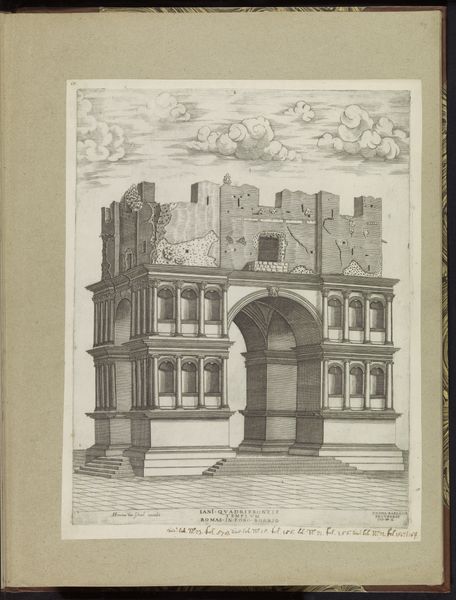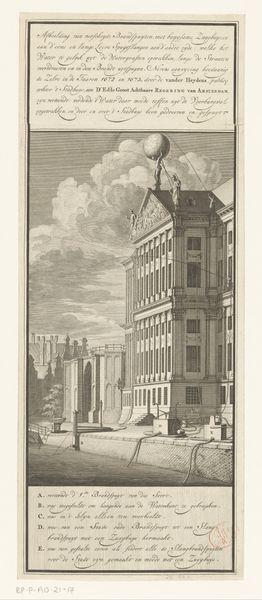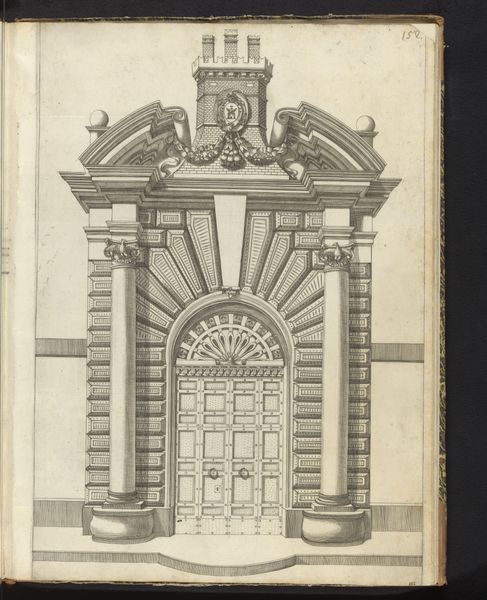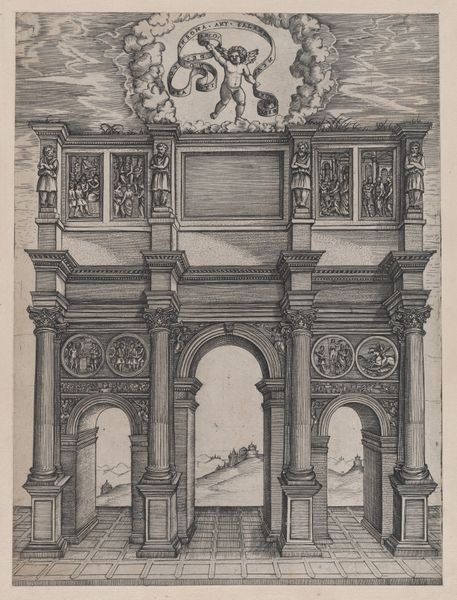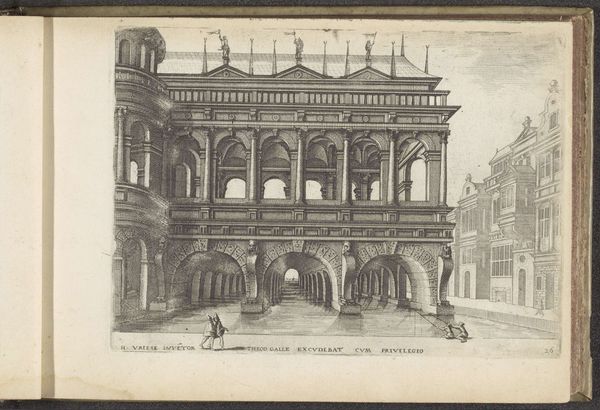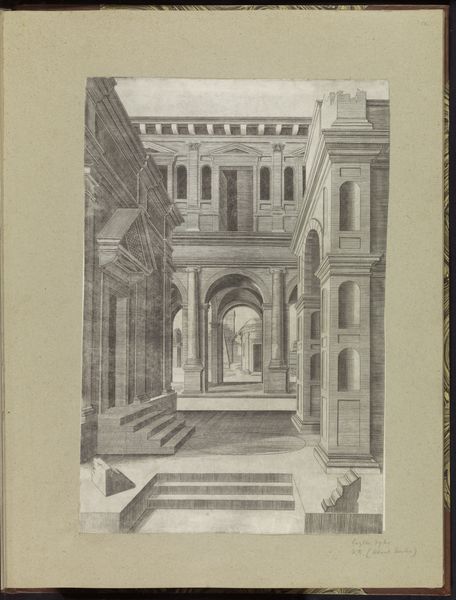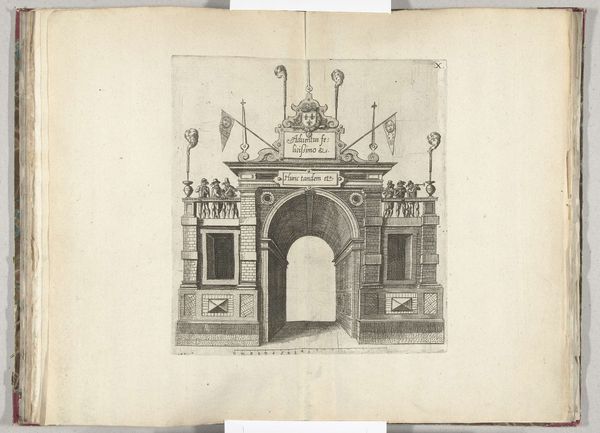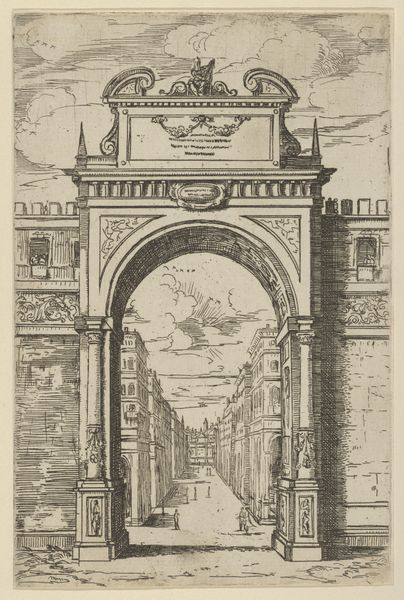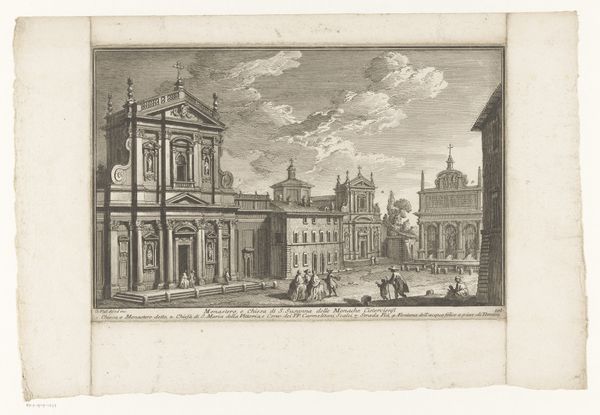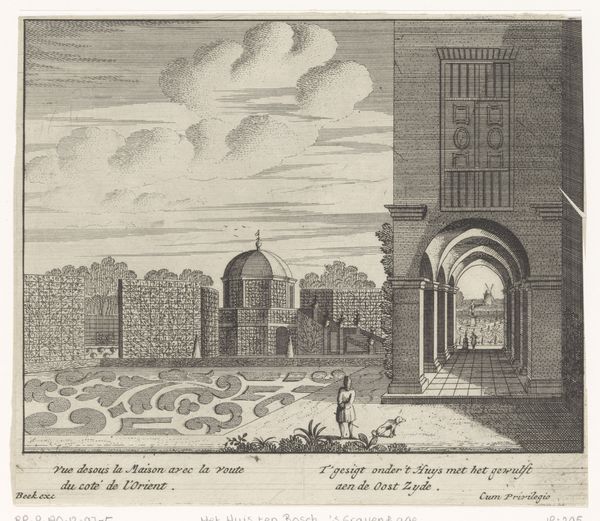
drawing, print, engraving, architecture
#
drawing
# print
#
11_renaissance
#
italian-renaissance
#
engraving
#
architecture
Dimensions: sheet: 22 1/8 x 16 3/4 in. (56.2 x 42.6 cm) plate: 17 11/16 x 13 7/8 in. (45 x 35.2 cm)
Copyright: Public Domain
Editor: This is "Speculum Romanae Magnificentiae: Temple of Janus," an engraving from 1550, probably by an anonymous artist. It depicts a ruined building in Rome. I find the contrast between the structure's intended grandeur and its current state of decay really striking. What can you tell me about this piece? Curator: It's fascinating to consider this image through a post-colonial lens. What does it mean to meticulously document and disseminate images of Roman ruins? Who held the power to interpret and distribute this image of a decaying imperial structure, and how does that relate to their cultural and political context? Editor: That's interesting. So, it’s not just about the architectural accuracy, but also about who gets to tell the story of this crumbling empire? Curator: Exactly. Think about the function of the print as a means of distributing knowledge. Whose knowledge was being valued and circulated? What narratives about power, authority, and history are being reinforced, and perhaps simultaneously, subtly undermined by showcasing decay? Is this a commentary on the ephemeral nature of power, or a celebration of enduring legacy? Editor: I see your point. I initially saw the decay as a straightforward observation, but now I am considering how the print itself plays into the power dynamics of that era. Curator: The act of preservation through documentation is a power play in itself. Who gets remembered and how is not a neutral act. Perhaps we could discuss the representation of labor and marginalized people in similar prints of this time, or, rather, their conspicuous absence? Editor: This has definitely changed my perspective. It’s made me realize how important it is to consider the social and historical forces that shaped both the creation and the reception of art. Curator: Absolutely. Engaging with art is an ongoing dialogue between the past and the present.
Comments
No comments
Be the first to comment and join the conversation on the ultimate creative platform.

